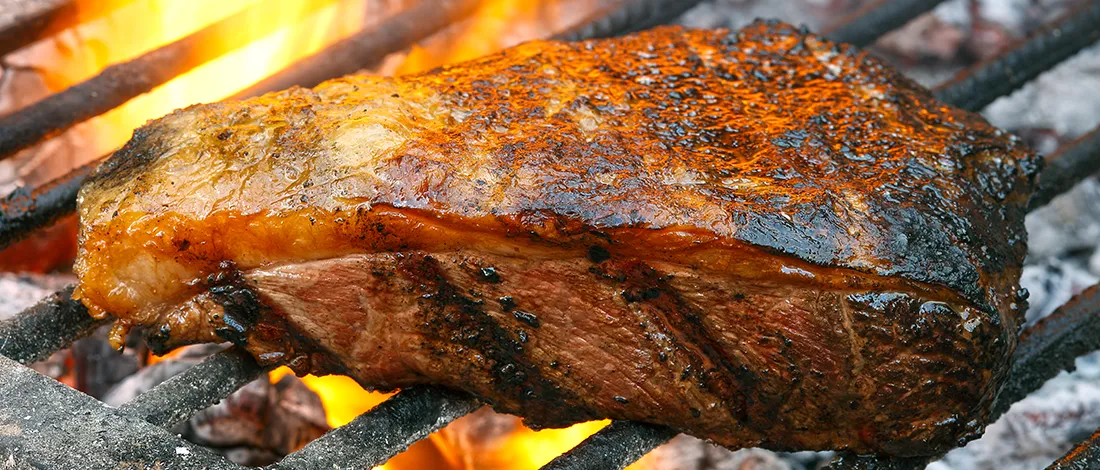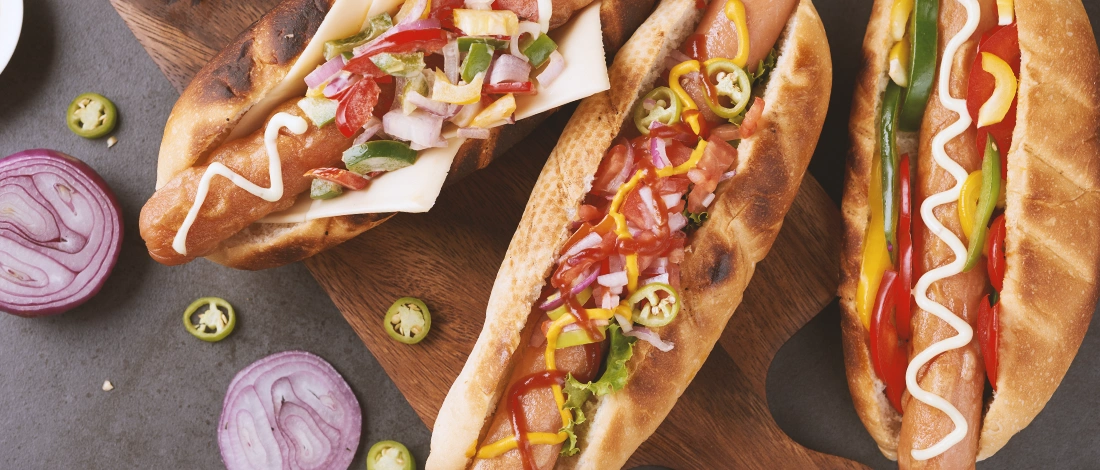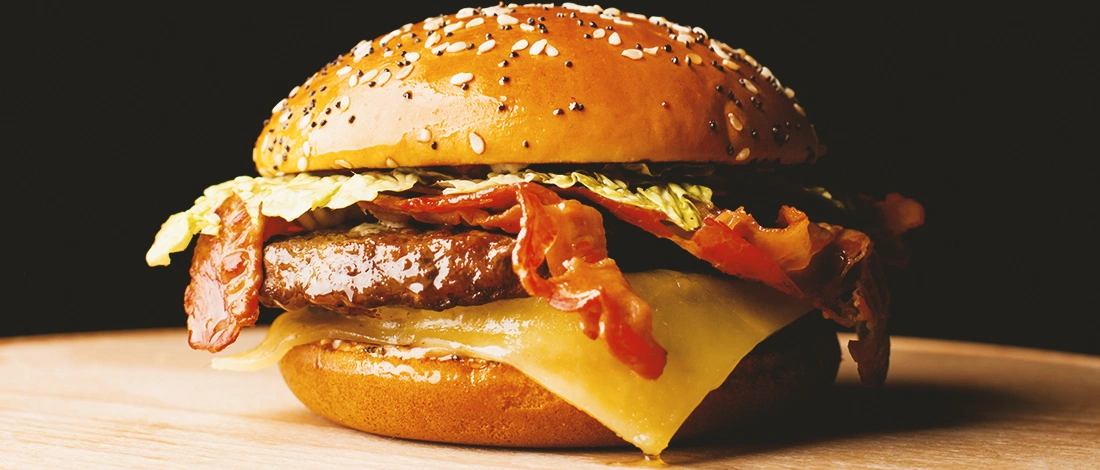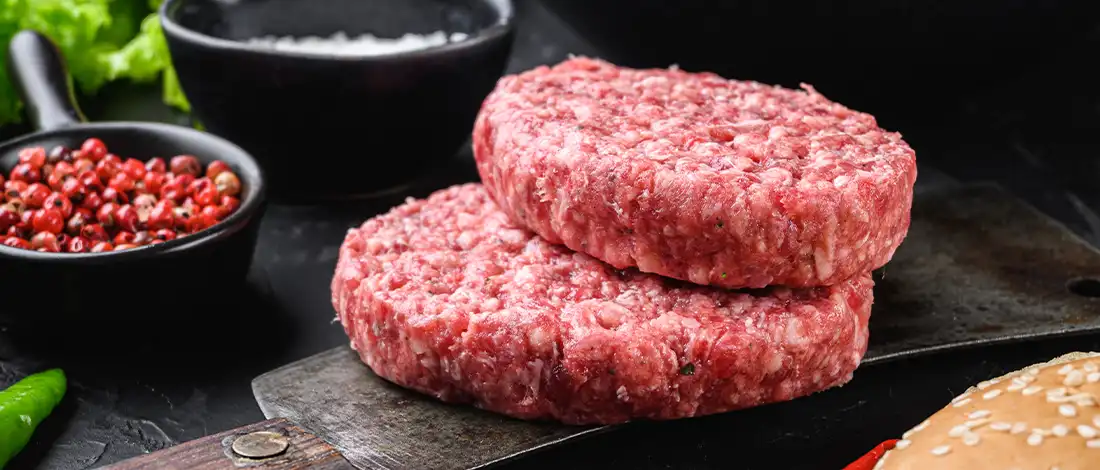I love hamburgers and always keep some in the freezer for a quick BBQ.
When I started my carnivore diet five years ago, I wasn’t really sure when my hamburgers were done, so I had to learn it through trial and error.
I committed a month to learn everything I could about safe hamburger temperature, the risks associated with undercooked beef patties, and tips to reduce them.
Here's what you need to know.
Quick Summary
- The USDA recommends a 160-165°F internal temperature for hamburgers.
- If you prefer a medium hamburger, cook it to 145°F for 6 minutes on each side.
- Use a meat thermometer to check the internal temperature of a hamburger accurately.
What's The Safest Temperature for a Burger?
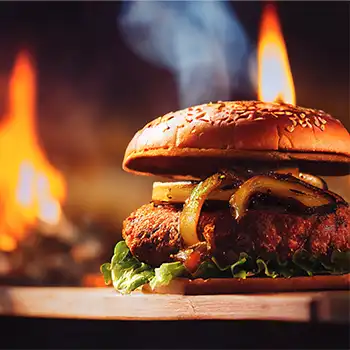
The safest temperature for a burger is 160°F, according to the USDA.
When the ground meat is cooked to this temperature, the dangerous bacteria are guaranteed to be destroyed, and the meat is safe to eat [1].
Grill the burgers to a temperature of 165°F if the meat has been combined with eggs or other ingredients.
While grinding your own meat is safer, it still cannot completely shield you from the foodborne illnesses frequently associated with ground beef.
5 Temperature Recommendations for Burger Doneness

It would be best to abide by the USDA's recommendations because they are the ones who decide what is safe or not.
By doing this, you maximize your food safety.
Let's look at the grilled hamburger temperature guide in detail to gauge burger doneness.
1. Well-Done Burger Temp
Beef burgers are considered well done when their interior temperature is between 160°F and 165°F.
At this temperature, hamburgers frequently have a rough texture and can be drier than other types.
2. Medium-Well Burger Temp
The interior temperature of a medium-well burger should be between 150°F and 155°F.
When resting, this temperature rises by 5°F (carryover cooking) as it's resting, so your burger might be closer to a well-done.
At this temperature, hamburgers usually have a drier texture on the surface and a bit of pink within.
3. Medium Burger Temp
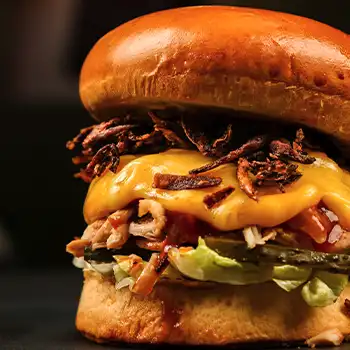
The internal temperature of a medium hamburger should be between 140°F and 145°F.
Cook burgers for 12 minutes on each side to ensure complete cooking.
Anything under 12 minutes risks leaving dangerous bacteria in your ground meat, which might lead to severe food poisoning.
Once more, this is below USDA requirements, but it's one of the most well-liked.
The inside is typically slightly pink, making it taste juicier.
4. Medium-Rare Burger Temp
The internal temperature of medium-rare hamburgers should be 130°F to 135°F.
The burger patties can be seared for 3–4 minutes on each side to achieve a medium-rare burger when grilled.
This will assist you in obtaining the desired pinkish-red core and a golden-brown exterior with minor charring.
When cooking burgers at this temperature, you run a greater chance of getting ill from your meal, but it can be considered entirely safe if the proper precautions are taken, such as grinding your own meat.
Read More: Is a Medium-Rare Burger Safe?
5. Rare Burger Internal Temp

The temperature of a rare burger should be 120°F to 125°F.
While the outside of the rare burger is flawless, the inside is slightly raw.
Cooking food at this temperature is never advised because it increases your risk of foodborne illness.
After all, insufficient heat has been applied to destroy dangerous microorganisms effectively.
Related Articles:
Health Risks of Under-Cooking Ground Beef
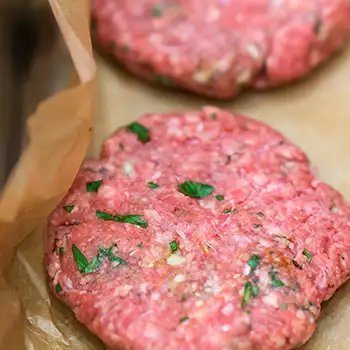
Ground beef is typically part of most hamburgers.
Since it's minced and formed into patties, the bacteria quickly spread bacteria throughout the flesh.
Any microorganisms on the meat's surface have been ground up and dispersed throughout the small pieces.
Meat from several cows is usually used to make pre-ground beef unless specified.
Even 1% of contaminated meat from numerous cows in a batch of beef will spoil the entire batch.
Consuming such contaminated meat will cause nausea, vomiting, diarrhea, or stomach cramping.
Even though spoilage bacteria are less dangerous than pathogenic bacteria, they can degrade food quality and produce an awful flavor [2].
If you cook ground meat to the recommended temperature, dangerous bacteria in food are destroyed.
"Heat is crucial in this situation since the common pathogens in ground beef, salmonella, and e coli, are not destroyed by freezing."
- U.S. Department of Agriculture
6 Tips to Reduce Risks of Food Poisoning

You can reduce the risks of food poisoning by following these tips:
- Thawing: The refrigerator is the safest place to defrost ground meat. Never let your burger patty get to room temperature during defrosting; always use a microwave or refrigerator.
- Shopping: Check at the "best before" dates on burger meat. Although these dates do not verify the goods' safety, they provide information about their freshness and probable shelf life.
- Cleaning: To prevent cross-contamination, wash your hands well before using the sink, as well as any other dishes, utensils, or surfaces that may have come into touch with raw hamburger and its juices.
- Chilling: Keep raw meat cold. At standard temperatures, bacteria multiply quickly. Don't leave your purchased meat unattended in the car or on a counter after you get home. Keep it cold, or freeze it right away.
- Cooking burgers: Make thin burger patties to ensure complete cooking. Use a two-stage cooking method by searing first so they form a crust on both sides, then move to the grill on low heat setting. Slow cooking ensures that you get a bacteria-free delicious burger.
- Storing: Store-bought ground beef separately from cooked food, with raw food kept at the bottom of the refrigerator to prevent juices from contaminating other food [3].
How to Know When Ground Beef is Done
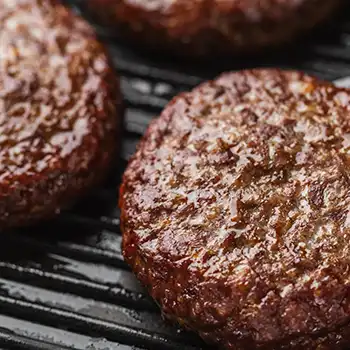
To know when ground beef is done, use an instant-read meat thermometer for the most significant results.
It's an essential tool to achieve a perfectly grilled burger.
Push the thermometer through the side of the ground meat with the point in the center to properly check the temperature of the hamburger.
A standard food thermometer takes at least 10 seconds to measure the burger's temperature accurately.
Remember to wash your thermometer thoroughly before rechecking the temperature.
FAQs
How Can You Avoid Food Poisoning When Working with Ground Beef?
You can avoid food poisoning when working with ground beef by maintaining general kitchen hygiene and proper storage. You should wash your hands thoroughly when handling raw patties and always keep them cold.
What Should I Use to Check Hamburgers’ Temperature?
Use a meat thermometer to check hamburgers’ temperature. This way, you eliminate any guesswork and prioritize your safety.
Is 145 Degrees Safe For Burgers?
Yes, 145°F is safe for burgers if you use hamburger meat that you have yourself ground or if you heat the food and maintain it there for 12 minutes.
Should You Monitor Your Hamburger's Temperature?
Monitoring your meat using a thermometer is recommended to protect yourself from any dangerous bacteria that may be present in it.
Since the grinding procedure can spread bacteria quickly when it comes to hamburger meat, it's advised that you cook your hamburger to a temperature of 160°F.
One of the best pieces of advice is to purchase hamburger meat from a trusted supplier.
A meat delivery service like ButcherBox is worthwhile because they deliver freshly frozen, nutritious hamburgers to my door.
Their cuts are from cows raised using sustainable standards and are free of hormones and antibiotics. To learn more about them, check our honest ButcherBox review.
References:
- https://www.foodsafety.gov/food-safety-charts/safe-minimum-internal-temperatures
- https://www.ncbi.nlm.nih.gov/pmc/articles/PMC7150063/
- https://www.fsis.usda.gov/food-safety/safe-food-handling-and-preparation/food-safety-basics/steps-keep-food-safe


